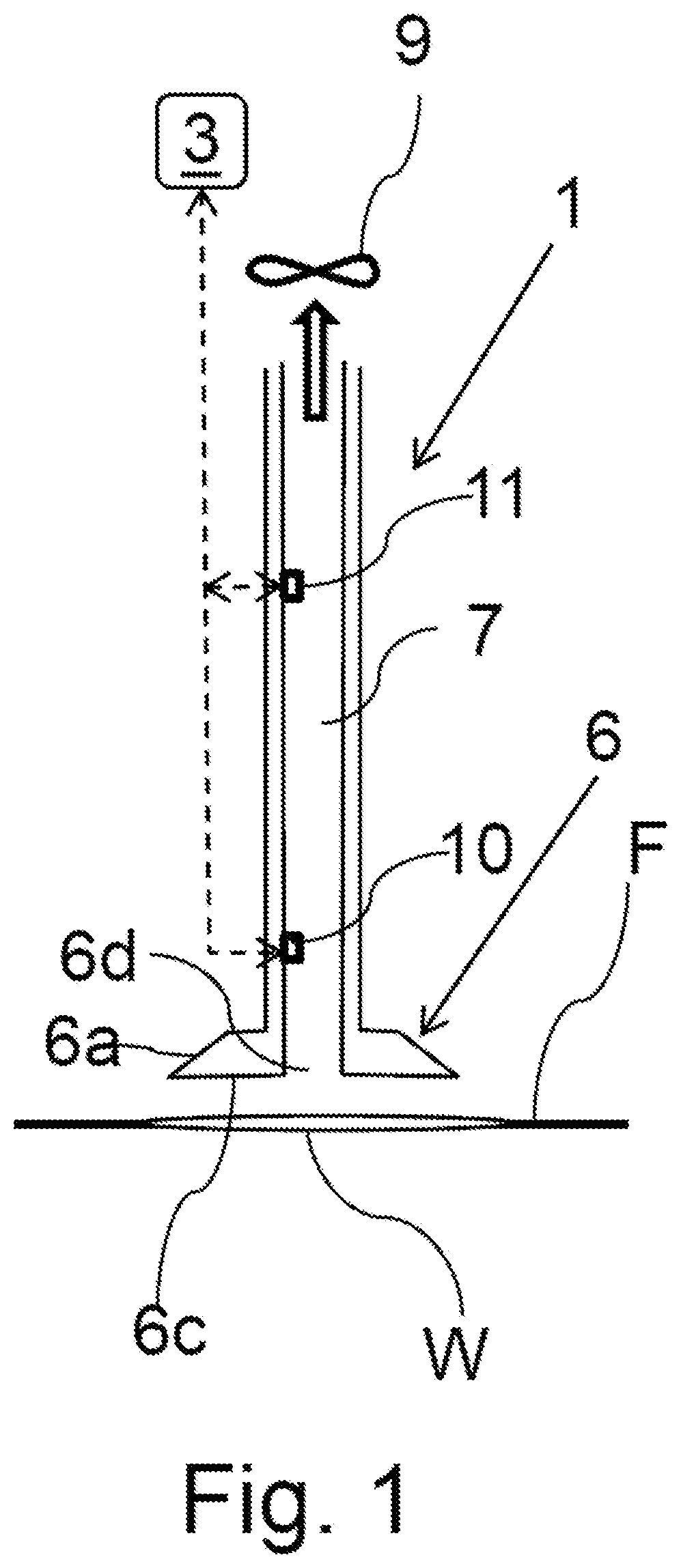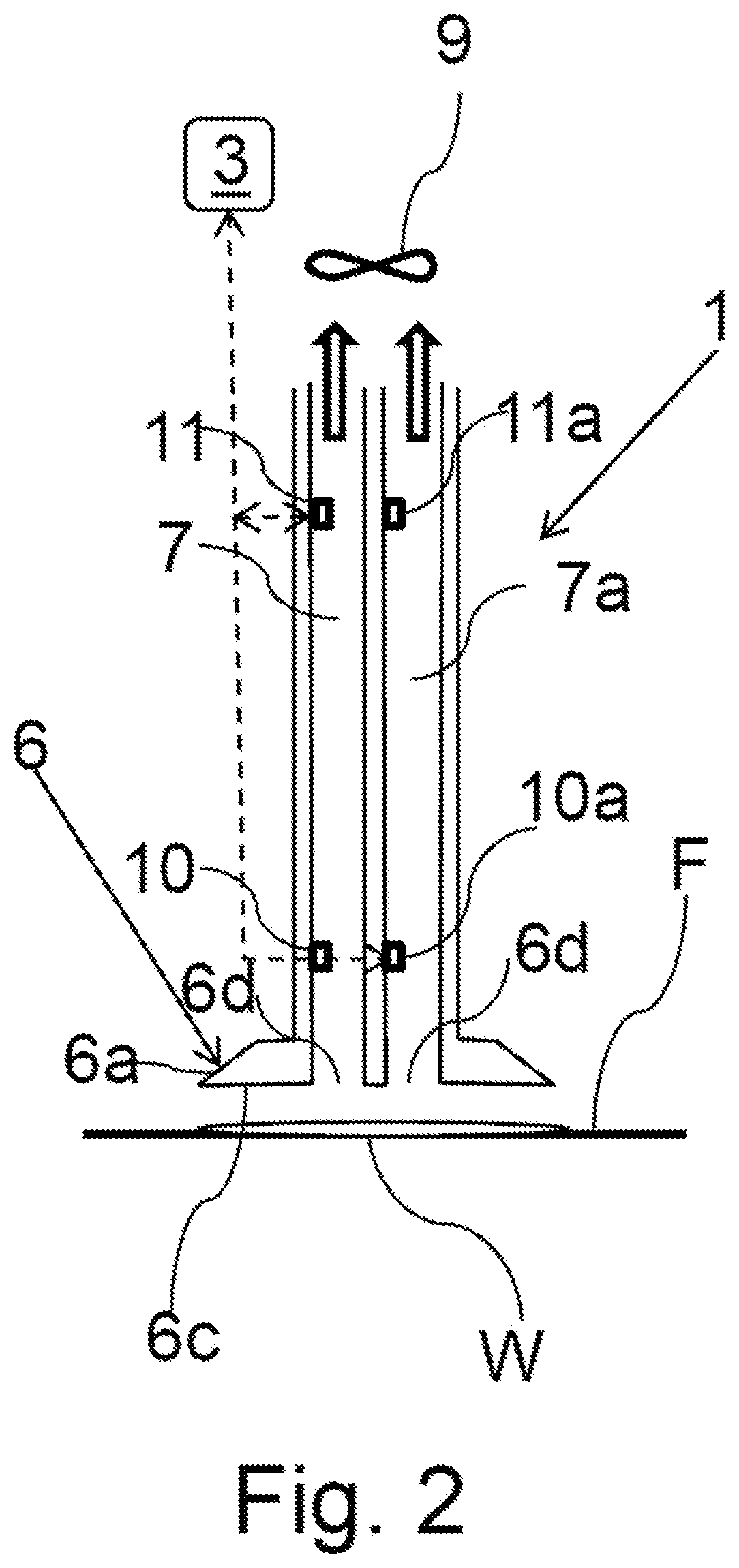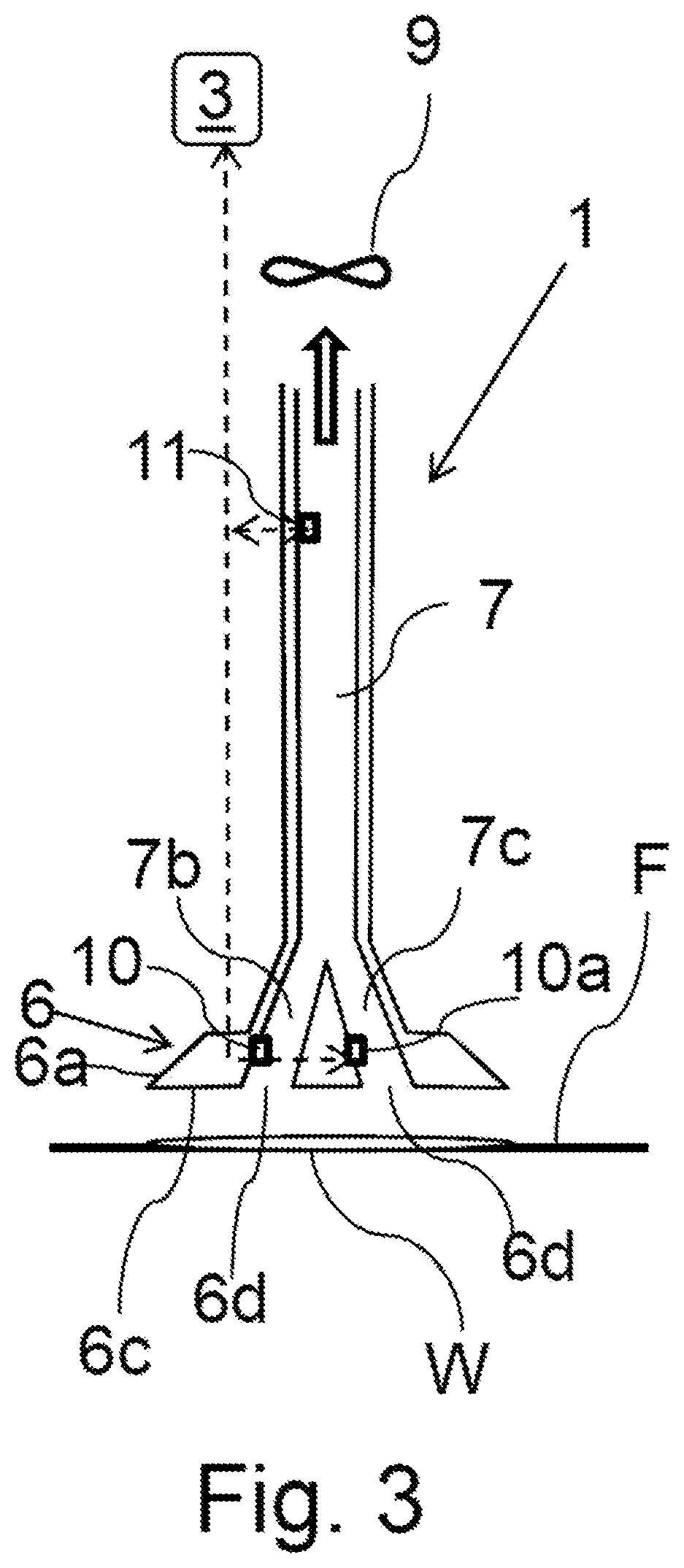Vacuum Cleaner Device
a vacuum cleaner and vacuum cleaner technology, applied in the direction of suction cleaners, cleaning equipment, electric equipment installation, etc., can solve the problems of difficult application of sensors, limited durability of relative humidity sensors, and negative slope of sampled relative humidity, so as to achieve less mechanical damage
- Summary
- Abstract
- Description
- Claims
- Application Information
AI Technical Summary
Benefits of technology
Problems solved by technology
Method used
Image
Examples
Embodiment Construction
[0085]FIG. 1 shows a vacuum cleaner device 1 for operation on a floor area F, wherein the device 1 comprises a suction duct 7 and an actuator 9 (e.g. a ventilator) that is configured to generate an underpressure in the suction duct 7 so that air is sucked into the suction duct 7. Further, the device 1 comprises a temperature sensor 10 configured to sample an air temperature in the vicinity of the device 1, wherein said temperature sensor 10 is arranged in the suction duct 7. Furthermore, the vacuum cleaner device 1 comprises an analyzing unit 3 configured to detect a wet spot W on said floor area F using said sampled air temperature.
[0086]Particularly, the device 1 comprise a head 6 having a bottom wall 6c configured to face said floor area F upon operation of the device 1 on said floor area F. Further, the head 6 may comprise a circumferential lateral wall 6a extending from the bottom wall 6c.
[0087]Alternatively, instead of arranging the temperature sensor 10 in the suction duct 7...
PUM
 Login to View More
Login to View More Abstract
Description
Claims
Application Information
 Login to View More
Login to View More - R&D
- Intellectual Property
- Life Sciences
- Materials
- Tech Scout
- Unparalleled Data Quality
- Higher Quality Content
- 60% Fewer Hallucinations
Browse by: Latest US Patents, China's latest patents, Technical Efficacy Thesaurus, Application Domain, Technology Topic, Popular Technical Reports.
© 2025 PatSnap. All rights reserved.Legal|Privacy policy|Modern Slavery Act Transparency Statement|Sitemap|About US| Contact US: help@patsnap.com



